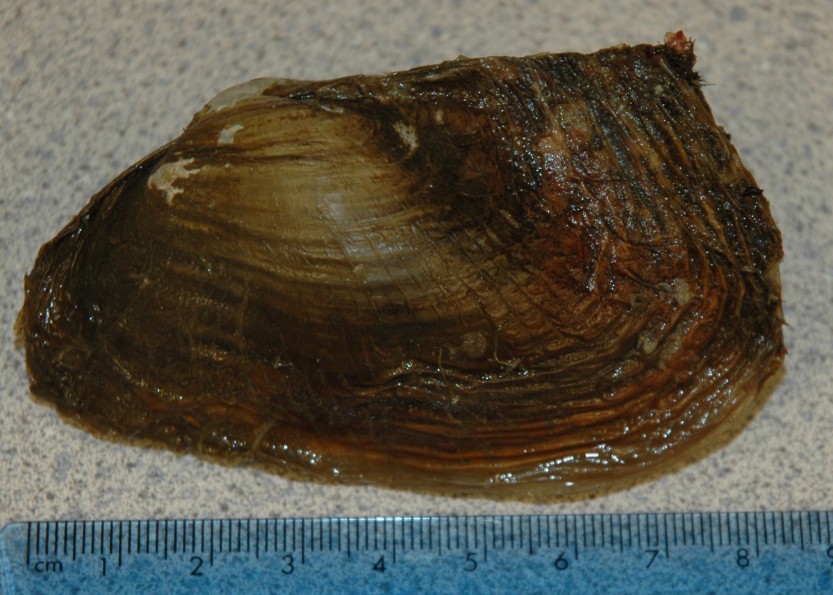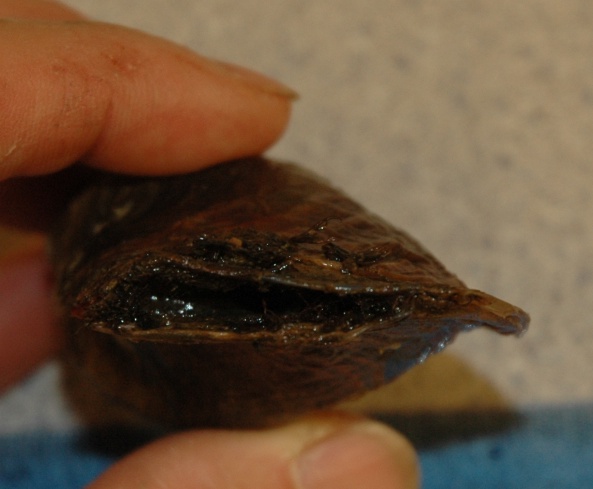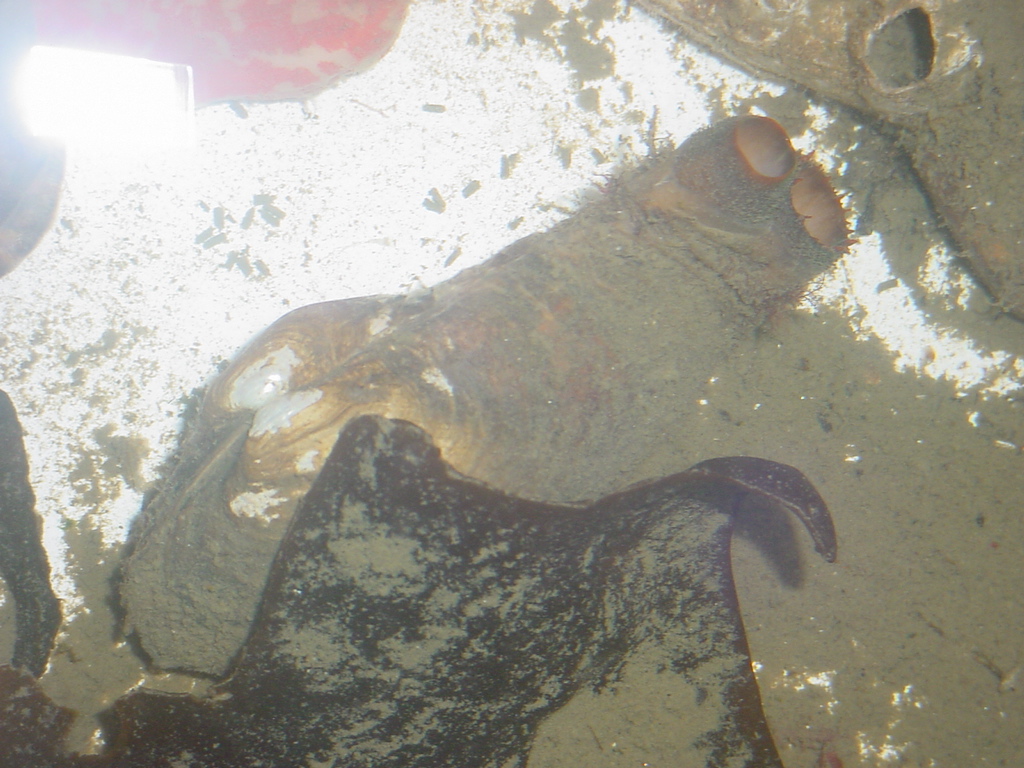Entodesma navicula A. Adams and Reeve, 1850Common name(s): Northwest ugly clam, Rock entodesma, Wrinkled rock clam, Rock-dwelling clam |
|
| Synonyms: Agriodesma saxicola, Agriodesma saxicolum, Entodesma saxicola, Lyonsia saxicola |  |
| Phylum Mollusca
Class Bivalvia Subclass Anomalodesmata Order Pholadomyoida Family Lyonsiidae |
|
| Entodesma navicula from Padilla Bay, collected near shore on March Point by Jon Mayberry | |
| (Photo by: Dave Cowles, July 2005) | |
How to Distinguish from Similar Species: Mytilimeria nuttalli has valves with a nearly circular outline or higher than long. Entodesma pictum has valves which do not gape, and is only up to 2.5 cm long.
Geographical Range: Aleutian Islands, Alaska to Baja CA
Depth Range: Low intertidal to 20 m
Habitat: Holes and crevices in rocks; Holdfasts of kelp and giant barnacles at the lowest low tide
Biology/Natural History:
Simultaneous
hermaphrodites,
though fertilization is external. Animals alternately release
sperm
and eggs. Shell often grows to conform to the hole or crevice
it
is in; or if not constrained, the anterior end grows narrow and short
and
the posterior end is swollen but abruptly truncate
and gaping. Can attach by byssal
threads to its crevice. Predators include Pycnopodia
helianthoides. May contain a symbiotic
pea crab Pinnixa
faba.
| Return to: | |||
| Main Page | Alphabetic Index | Systematic Index | Glossary |
References:
Dichotomous Keys:
Flora
and Fairbanks (1966) [as Entodesma saxicola]
Kozloff (1987, 1996) [as Agriodesma saxicola]
Smith and Carlton, 1975 [as Entodesma saxicola]
General References:
Harbo,
1997
Johnson
and Snook, 1955 [as Entodesma saxicola]
Morris,
1966 [as Entodesma saxicola]
Morris
et al., 1980 [as Entodesma saxicola]
Sept,
1999
Scientific Articles:
General Notes and Observations: Locations, abundances, unusual behaviors:
I have not often seen this clam. It was dug up by a student, Jon Mayberry, near shore (approx. +1 tide level) at March Point in Padilla Bay, July 2005

The gape in the shell at the posterior end can be clearly seen here.

View of the right valve. Note the loose periostracum.
The siphons are said to be orange, though in this view in our tank they look more brownish-orange or cream colored (compare below). Photo by Dave Cowles, July 2005
This individual has siphons
which are more orange-colored. Note also the foot projecting
from
the anteroventral side (top right), which appears to be specialized for
holding onto rocks rather than the standard hatchet-shape seen in
species
which dig in soft substrates. Photo by Dave Cowles, July 2012
Authors and Editors of Page:
Dave Cowles (2005): Created original page

